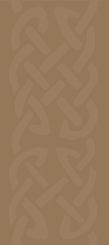![]()
Book 2:
Lessons
Menu
| 43 | 44 | 45 | |
| 46 | 47 | 48 | 49 |
| 50 | 51 | 52 | 53 |
| 54 | 55 | 56 | 57 |
| 58 | 59 | 60 | 61 |
| 62 | 63 | 64 | 65 |
| 66 | 67 | 68 | 69 |
| 70 | 71 | 72 | 73 |
| 74 | 75 | 76 | 77 |
| 78 | 79 | 80 | 81 |
| 82 | 83 | 84 | 85 |
| 86 | 87 | 88 | 89 |
| 90 | 91 | 92 | 93 |
| 94 |
exercise LXXIII
Not to weary the student by giving at once all the exceptional words of the language, we propose to speak now of simple matters.
§ 424. The gender of Irish words
Beings posessing animal life are divided into male and female, and te words which are NAMES for beings of the male sex are said to be of the masculine gender, and the words which are NAMES for beings of the female sex are said to be of the feminine gender.
Thus the following words are masculine: fear, a man; capall, a horse; tarḃ (thor'-ăv), a bull; coileaċ (Kel'-ăCH, Munster Kel-OCH'), a cock
These are feminine: bean, a woman, láir, mare; bó, a cow, cearc, a hen.
§ 425. But in Irish, as in Latin, Greek, and most other languages, even things without life are personified and said to be either masculine or feminine in gender.
'Thus the following words are siad to be masculine:— (see vocabulary to the first part of the Simpe Lessons in Irish), am, time; aol, lime; arán, bread; bás, death, bainne, milk, etc
These are said to be feminine: aill, a cliff; áit, a place; coill, a wood, etc.
§ 426. In English, the words "time", "lime", "cliff", etc, are said to be neuter gender, that is—neither masculine or feminine. In the older Irish, also, some words were regarded as neuter, and there are still a few traces of this in modern Irish.
§ 427. How are we to know what words are to be regarded as masculine and what as feminine? Not from the meaning ofthe words, but from their form, or, we might say, from their ENDINGS.
§ 428. Thus, as a general rule, allwords are masculine which end in a consonant or two consonants preceded by a BROAD vowel (a, o, u). FOr example, am, aol, arán, bás, given above. This rule, or course, does not affect words like cearc, a hen, which is naturally feminine.
§ 429. Similarly, as a general rule, words are of feminine gender which end in a consonant or two consonants preceded by a SLENDER vowel (e, i), as áit, aill, coill, above. This rule does not affect words such as flaiṫ, a prince, which is, of course, masculine.
§ 430. This use of the masculine and feminine gender, for words denoting things without life, has an affect on the use of the pronouns for masculine (he), feminine (she), and neuter (it). Instead of heaving three pronouncs for masculine (he), feminine (she), neuter (it), we find as a rule only two pronouns, sé, sí; — sé being used for masculine nouns and sí for feminine. As, Atá an feur fada, agus atá sé folláin, the grass is long, and it (literally he) is wholesome. Ní ḟuil an áit tirim, agus ní ḟuil sí follaín, the place is not dry, and it (literally she is not wholesome.
(See Vocabulary to Part I of lessons.)

note that
phonetic
symbols
are not
necessarily pronounced
as in English